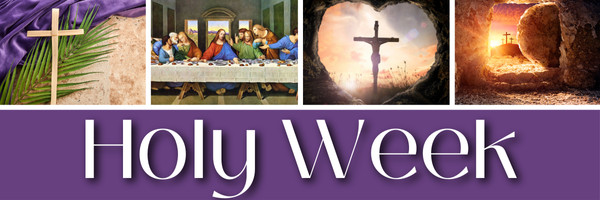We ask you, urgently: don't scroll past this
Dear readers, Catholic Online was de-platformed by Shopify for our pro-life beliefs. They shut down our Catholic Online, Catholic Online School, Prayer Candles, and Catholic Online Learning Resources essential faith tools serving over 1.4 million students and millions of families worldwide. Our founders, now in their 70's, just gave their entire life savings to protect this mission. But fewer than 2% of readers donate. If everyone gave just $5, the cost of a coffee, we could rebuild stronger and keep Catholic education free for all. Stand with us in faith. Thank you.Help Now >
A Sign of Hope: Jesus, The Divine Mercy
The Divine Mercy image that Jesus asked to be blessed and venerated on that feast is an image of hope. It is an icon to draw us into the Sacraments of Confession and Holy Communion with great trust. It is the perfect representation of those sacraments with its light rays symbolizing the life blood and water that poured forth from our Savior´s heart when Jesus was pierced on the Cross. When we look at the image, we are to imagine that blood and water cleansing us from our sins.
Highlights
Catholic Online (https://www.catholic.org)
4/10/2010 (1 decade ago)
Published in Lent / Easter
PORT ST. LUCIE, FL (Catholic Online) - Jesus surely knew what He was doing when He gave us the Divine Mercy image. The economy, the uneasiness associated with terrorism, wars and rumors of wars, natural disasters. Everybody is looking for signs of hope. The Lord has already provided for everything, there is no need to fear. People often wonder where the Divine Mercy image came from, but a more important question would be "why did Jesus give us this image, what does it portray, and why now in this time?" When Jesus appeared to St. Faustina in 1931, He came with an incredible message of hope. He told her about many things, but the central point was that He wanted to pour out His mercy in abundance before He comes again to judge the world. Our Lord said to her "Paint an image according to the pattern that you see, with the signature: Jesus, I trust in You! I promise that the soul that will venerate this image will not perish. I also promise victory over its enemies.... especially at the hour of death. I Myself will defend it as My own glory". (Diary, entry #48) These are great promises of salvation and hope, but that is not all. Jesus gave us much more to hope for. Jesus told St. Faustina that He wanted a special feast celebrated in the Church on the first Sunday after Easter where He would pour out His mercy. Jesus said to her "I desire that there be a Feast of Mercy. I want this image, which you will paint with a brush, to be solemnly blessed on the first Sunday after Easter; that Sunday is to be the Feast of Mercy". (Diary, entry #49) Of all the things that Our Lord asked her to write down in her diary, the Feast of Mercy was the most important. Why? Because the Feast of Mercy gives us the greatest hope of all: a direct entry into eternal life in Heaven on that day. Jesus promised the complete forgiveness of all sins and all punishment to anyone who would go to confession and receive Holy Communion on that feast. What could bring us more hope in the world that we live in today, than that incredible promise? The Divine Mercy image that Jesus asked to be blessed and venerated on that feast is an image of hope. It is an icon to draw us into the Sacraments of Confession and Holy Communion with great trust. It is the perfect representation of those sacraments with its light rays symbolizing the life blood and water that poured forth from our Savior´s heart when Jesus was pierced on the Cross. When we look at the image, we are to imagine that blood and water cleansing us from our sins. Pope Benedict XVI wrote of such an image and the need to have one in every church. He stated in his book ´The Spirit of the Liturgy´ that the miss-understanding of Vatican II and the removal of images has "left behind a void, the wretchedness of which we are now experiencing." He continued "The complete absence of images is incompatible with faith in the Incarnation of God. God has acted in history and entered our sensible world.... Images of beauty, in which the mystery of the invisible God becomes visible, are an essential part of Christian worship. The image of Christ is always an icon of the Eucharist, that is, it points to the sacramental presence of the Easter mystery". He used about 20 pages in that book to set the record straight on images in our sanctuaries. He went on to say "Where do we go from here?" and identified the fundamental principles of an art ordered to divine worship and the importance of images. He perfectly described every aspect of the Divine Mercy image as the perfect icon, not only for the celebration of the Feast of Mercy, which has been instituted in our Church as Divine Mercy Sunday, but for every single liturgy. If our Pope is calling for these images to be placed in our churches, who are we to argue? Jesus surely knew what He was doing. Everything that the Church needs right now has been given to us through His modern day prophets; St. Faustina, Pope John Paul II, and now Pope Benedict. Only through our obedience to the Magisterium will we all find the peace and hope that Our Heavenly Father wants all of us to experience. We cannot turn our backs on our dear Lord and Savior. What are we to be obedient to? This is very simple. First of all we need to look at the Church documents that are associated with Divine Mercy Sunday. The most important of these are the decrees for the establishment of Divine Mercy Sunday and the special plenary indulgence for that feast that was issued in 2002 that states within it the "Duties of Priests". This should come as no surprise as this latter decree was published worldwide and made available to all of the bishops. To be specific, the "Duties of Priests" calls for all priests who exercise pastoral ministry, and especially parish priests, to inform the faithful in the most suitable way of the Church's salutary provision (plenary indulgence). They should promptly and generously be willing to hear their confessions (within several days, about 20, before or after the feast). On Divine Mercy Sunday, after celebrating Masses, they should all lead the recitation of the prayers for the indulgences, which are the Our Father, Apostles Creed, a prayer for the Pope (that could be a Hail Mary) and also add a devout prayer to the merciful Lord Jesus, such as "Merciful Jesus, I trust in you!" It is important that we pay attention to the words in that decree, particularly to the words "in the most suitable manner" as pertains to telling everyone about the plenary indulgence. What good would it do, to wait until Mercy Sunday to get the word out? The whole idea is to get the word out to everyone before, especially to all of the Easter-only and Fallen-away Catholics that are in mortal sin. There are many reasons why Jesus wanted this Feast of Mercy on the Sunday after Easter, and getting the Easter-only Catholics back must be a primary one. How else can we get these people back? The promise of the total forgiveness of sins and punishment is an enticement of major proportions and we should get serious about preaching about this on Easter while we have them sitting there right under our noses. We can´t let them perish into Hell for eternity! The Easter-only and Fallen-away Catholics may be acting like everything is fine, but deep within; they do not have peace or any hope. Only through reconciliation with the Lord, will they find that peace and hope. Jesus has given us everything that we need in this feast to make it all better. He has given us this tremendous promise of the total forgiveness of sins and punishment and He has given us His image, not only to get us to approach the confessional with trust, but also to give us great hope for the future. What could give us more hope, than a direct pass straight to Heaven? What should we do? Follow the Lord´s instruction. Get a Divine Mercy image installed in your parish. Tell everyone about Divine Mercy Sunday, especially all of the Easter-only Catholics. Put articles in the newspaper to reach all of the other Luke-warm and Fallen-away Catholics. Do everything that you possibly can, including on radio and TV. Don´t let anyone perish into Hell for eternity. Jesus did tell Saint Faustina that the loss of each soul plunges Him into mortal sadness. -----
R. Allard, Director, Apostles of Divine Mercy, has been promoting the celebration of Mercy Sunday since 1996. He has recently appeared on EWTN TV and Radio, has given many talks and has arranged conferences and retreats for bishops, priests, and seminarians.
---
'Help Give every Student and Teacher FREE resources for a world-class Moral Catholic Education'
Copyright 2021 - Distributed by Catholic Online
Join the Movement
When you sign up below, you don't just join an email list - you're joining an entire movement for Free world class Catholic education.

-

- Stations of the Cross
- Easter / Lent
- 5 Lenten Prayers
- Ash Wednesday
- Living Lent
- 7 Morning Prayers
- Mysteries of the Rosary
- Litany of the Bl. Virgin Mary
- Popular Saints
- Popular Prayers
- Female Saints
- Saint Feast Days by Month
- Pray the Rosary
The surprising origins of the Easter Bunny — it’s not what you think!
The Way of the Cross: A Good Friday Reflection on Christ’s Final Journey
The Many Reasons Why We Call it Good Friday
Daily Catholic
 Daily Readings for Sunday, April 20, 2025
Daily Readings for Sunday, April 20, 2025St. Marian: Saint of the Day for Sunday, April 20, 2025
 Children's Prayer For Parents: Prayer of the Day for Sunday, April 20, 2025
Children's Prayer For Parents: Prayer of the Day for Sunday, April 20, 2025 Daily Readings for Saturday, April 19, 2025
Daily Readings for Saturday, April 19, 2025 St. Alphege: Saint of the Day for Saturday, April 19, 2025
St. Alphege: Saint of the Day for Saturday, April 19, 2025- Stewardship Prayer: Prayer of the Day for Saturday, April 19, 2025
![]()
Copyright 2025 Catholic Online. All materials contained on this site, whether written, audible or visual are the exclusive property of Catholic Online and are protected under U.S. and International copyright laws, © Copyright 2025 Catholic Online. Any unauthorized use, without prior written consent of Catholic Online is strictly forbidden and prohibited.
Catholic Online is a Project of Your Catholic Voice Foundation, a Not-for-Profit Corporation. Your Catholic Voice Foundation has been granted a recognition of tax exemption under Section 501(c)(3) of the Internal Revenue Code. Federal Tax Identification Number: 81-0596847. Your gift is tax-deductible as allowed by law.


 Daily Readings for Sunday, April 20, 2025
Daily Readings for Sunday, April 20, 2025 St. Marian: Saint of the Day for Sunday, April 20, 2025
St. Marian: Saint of the Day for Sunday, April 20, 2025 Children's Prayer For Parents: Prayer of the Day for Sunday, April 20, 2025
Children's Prayer For Parents: Prayer of the Day for Sunday, April 20, 2025 St. Alphege: Saint of the Day for Saturday, April 19, 2025
St. Alphege: Saint of the Day for Saturday, April 19, 2025

